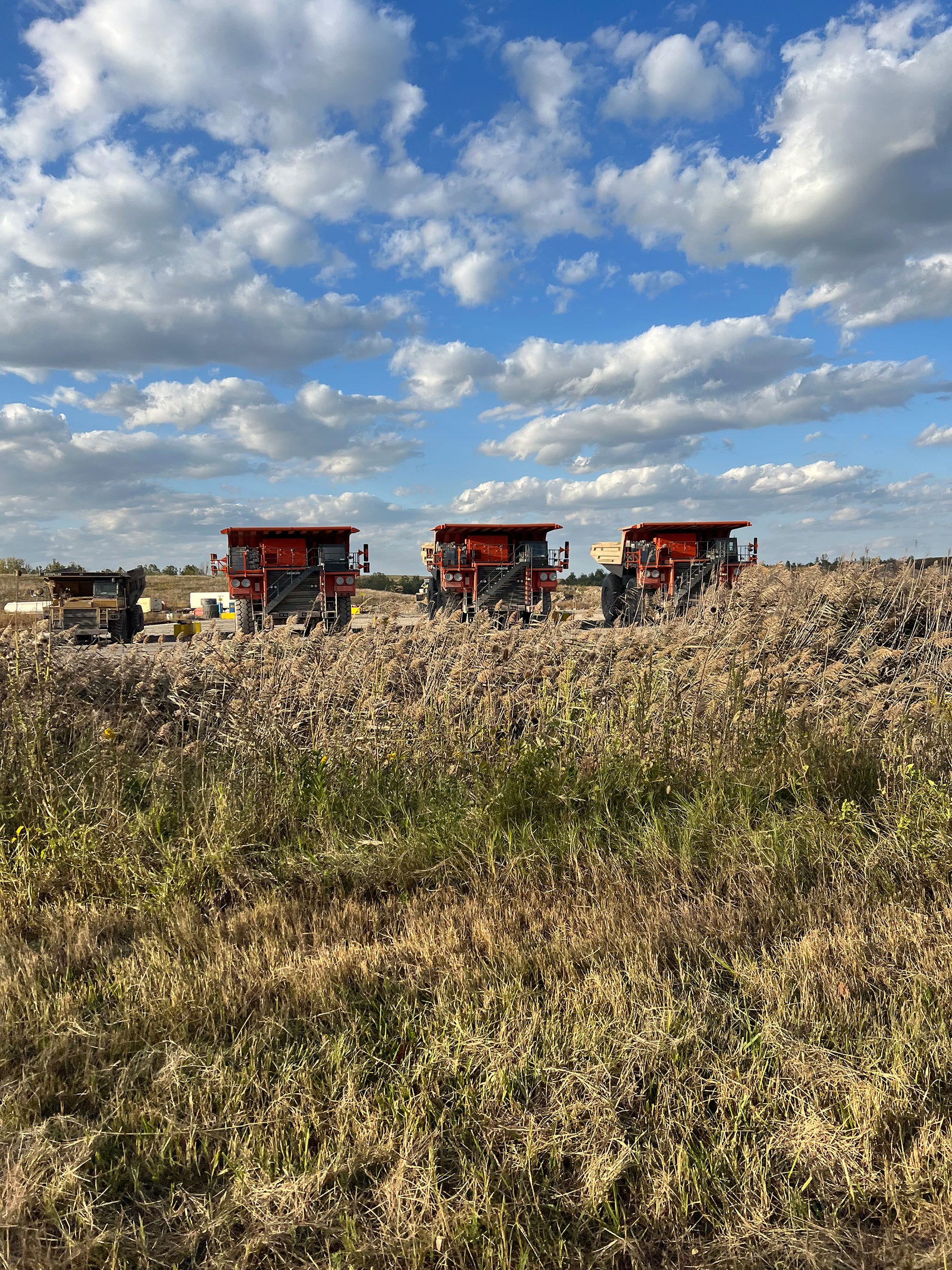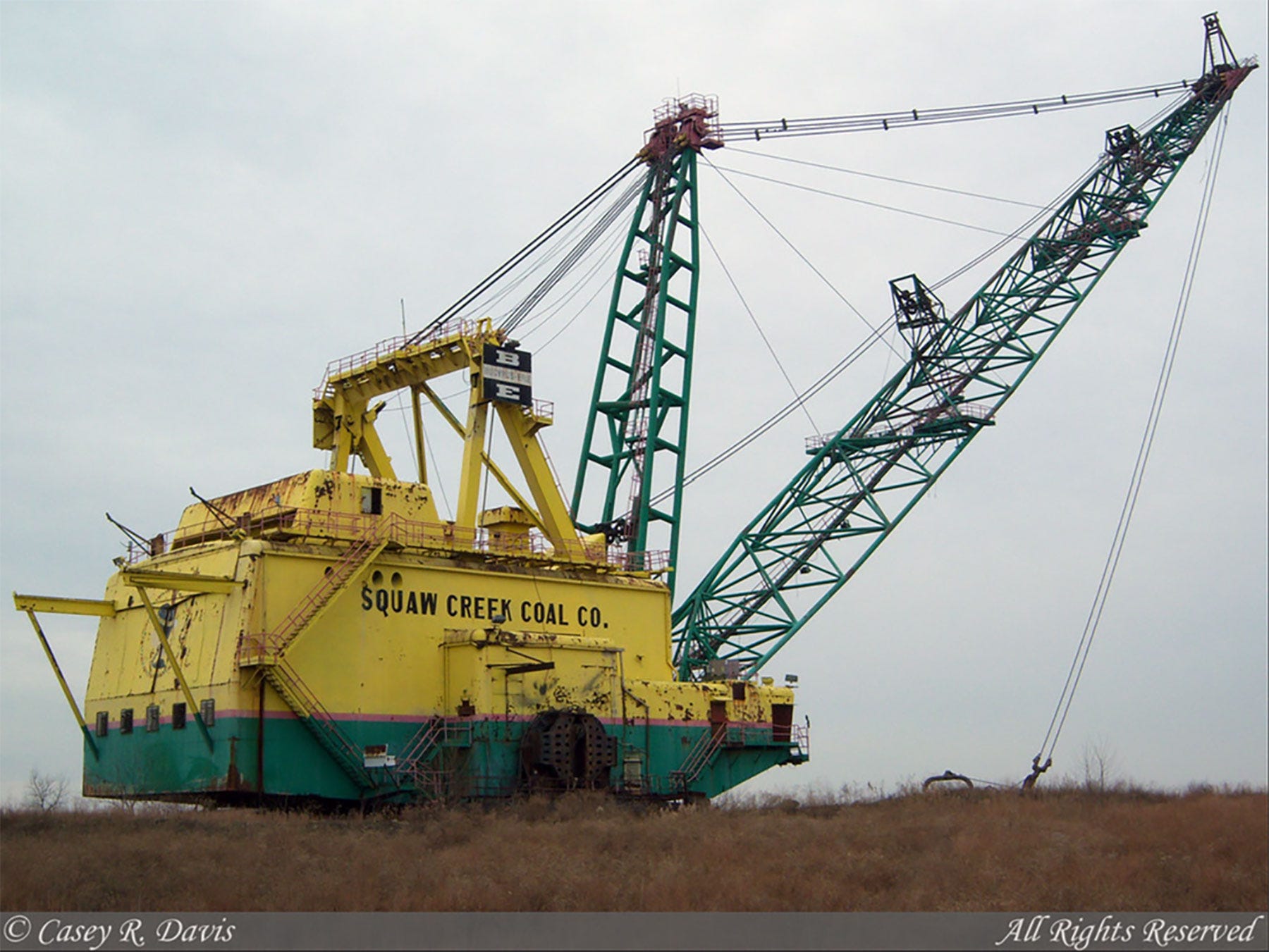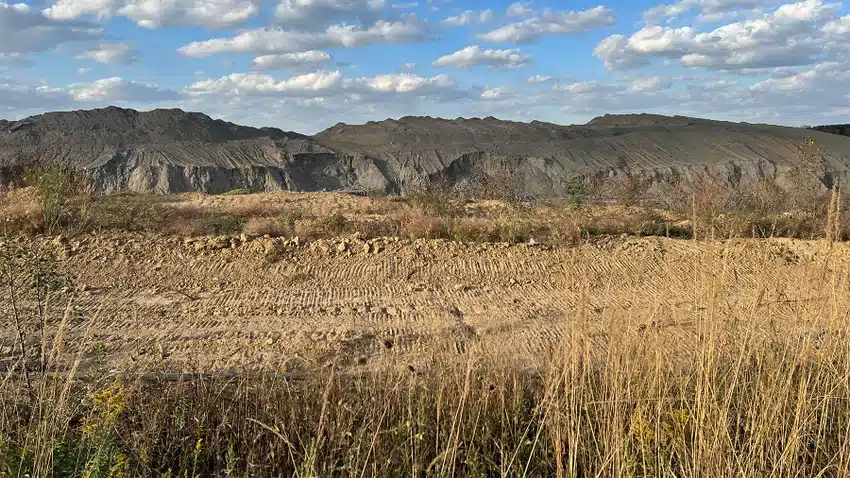In the southern portion of Indiana, coal mining is a significant industry. But reclamation is even more crucial because it improves and restores the natural landscape.
To understand the significance of farmland reclamation and draglines, turn to the experts. Monty Parke, senior reclamation manager and ex-dragline worker, and Robert Pendleton, environmental reclamation supervisor, work at Peabody’s Wild Boar Mine. They provide insight on the mining and reclamation process.
They emphasize that reclamation is just as important as mining. The California Department of Conservation explains reclamation as the combined process by which adverse environmental effects of surface mining are minimized and mined lands are returned to a beneficial end use. Parke explains the process of reclamation in Indiana today this way: Every acre that is mined is returned to the state that it was in before mining.
Each land use type has different productivity and different standards. Parke was the recipient of Indiana’s Vance “Pat” Wiram Award for Innovation in Reclamation and Mining Technology for his exceptional reclamation work at the company’s mine in Indiana.
5-year time clock
The reclamation process involves meticulous planning, with different standards for each land use type. Prime farmland, considered the highest standard, requires deposition of 4 feet of soil. The first year post-reclamation typically sees introduction of cover crops or a pasture and hay mix, Pendleton says. This initiates a five-year time clock during which the land must meet productivity standards for release.
“We do the soil mapping ahead of time, segregating topsoil and subsoil,” Pendleton says. “For prime farmland, we put back 12 inches of topsoil within the 4-foot depth. We work closely with local farmers, leasing the reclaimed land to them for hay production or crop cultivation.”
At the end of that five-year period, the goal is to be able to seed deep-rooted plants like corn and soybeans.

TOOLS OF THE TRADE: Three dump trucks are parked outside of a mine near Boonville in southern Indiana. (Kendall Johnson)
In 2018, Wild Boar Mine received the National Reclamation Award for reclamation work on the Barren Fork Pit near Lynnville, Ind. Awarded by the Interstate Mining Compact Commission in the coal category, the award recognizes the company’s “dedication to the maintenance of environmental protection through efficient mining and reclamation practices.”
Dragline method
While there are still different ways to mine, ex-dragline worker Randy Dempsey discusses how the dragline, a machine for excavating, was a front-runner for this work when it was created.
“It was special because it helped reclaim the mining land when we were done with it,” he says.
The landscape of mining is evolving, and the prevalence of draglines has seen a decline in certain regions. There are still draglines that operate, but the issue lies with finding a big enough plot of land suitable for the machine.
Pendleton emphasizes the economic value of draglines in expansive pits, often exceeding a mile in length. However, these bigger plots of land are scarce, making the use of draglines less practical in certain terrains.
Peabody employs three draglines — two 2750s located at Somerville, Ind., and Bear Run, Ind., and one 2550 at Bear Run. Here, the mines are larger and have deeper reserves, so draglines can provide optimal performance.
Despite the challenges, draglines remain an integral part of Peabody’s mining operations, showcasing their versatility and effectiveness in the right conditions. The dragline’s historical significance and continued use speak volumes about its impact on the mining industry. As technology advances and mining practices evolve, it will be interesting to observe how this iconic machine continues to adapt and contribute to the mining industry.
The legacy of an iron dinosaur
The history of draglines in southern Indiana dates back to a time when manual labor and shovel machines dominated the mining scene. The introduction of draglines represented a revolutionary shift in mining technology. These machines, equipped with enormous buckets suspended from lengthy booms, could excavate vast quantities of earth with unprecedented efficiency.
Both types of mining are successful; however, Parke says dragline use is cheaper. Years ago, when the dragline at Squaw Creek was in use, it was very beneficial to the mining scene in the area for many different reasons. Dempsey goes into detail about the history of the machine.

IRON DINOSAUR: The Squaw Creek dragline sat in Lynnville, Ind., for years. This was its final resting place. The lengthy boom made this machine impressive when extended. It has since been torn down. (Casey R. Davis/Reprinted by permission of Michael Davis)
The dragline stationed in Lynnville became a local legend, he explains. Built in the early ’70s and named the Squaw Creek dragline, it stood as a symbol of technological accomplishment in the mining industry. Operated by skilled individuals like Dempsey and Parke, it played a pivotal role in shaping the mining landscape of Warrick County, Ind.
“When it was in use, it was important because mines were shallower and they could strip over the burden,” Dempsey says. The burden is dirt that sits on top of coal. This process of removing burden happened faster and more economically with the dragline.
This specific machine embarked on its own journey. It once “walked,” a fete draglines can accomplish, about 4 miles, even crossing Indiana Highway 61. Dempsey remembers putting dirt over the road to protect it from the immense weight of the machine.
Dempsey was there when Squaw Creek dragline walked to its final resting place, the Lynnville mine. The machine was demolished because it was no longer in use. Residents of surrounding areas could feel the earth shake as the boom was torn down. The demolition marked the end of an era.



